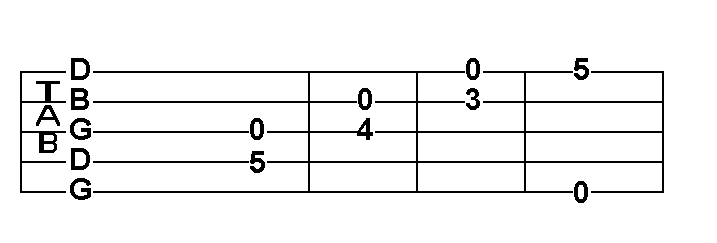Mike Moxcey ©2005
5-String Banjo
The banjo was invented in America. It was brought over by the slaves as a 3- or 4-string instrument played in “frailing” style where the right thumb plucks the short string during strums. Joel Walker Sweeney was credited with adding the bass string (the 4th) string and popularizing the banjo through Minstrel Shows in the 1840s. Earl Scruggs, playing with Bill Monroe’s Bluegrass Boys, popularized a new style of playing the banjo in the 1940s.
There are many different banjo tunings. Some are used mainly while frailing, where others are generally used for bluegrass style. Possibly the most popular tuning for each is “standard” or open G:
g D G B D from the 5th string (shortest) to the first.
Because the 5th string is short and high, it is usually shown as a lower-case letter-g.
- The basic tuning strategy is to
- tune the 4th string, the heaviest one, to a D note from a piano or tuner or pitchpipe or some other device.
-
Then you fret the 4th string at the 5th fret and tune the 3rd string to that note (G).
-
Then you fret the 3rd tring at the 4th fret and tune the 2nd string to that note (B).
-
Then you fret the 2nd string at the 3rd fret and tune the 1st string to that note (D).
-
Finally, you fret the 1st string at the 5th fret and tune the 5th string to that note (G).
Here is what the tuning notes look like in tab. For each pair of doubled notes, the open string is the one you’re trying to tune and the fretted one is the note you strike first to hear what the open string should sound like.

The horizontal lines on the tab are strings.
The bottom line of the tab stands for the top string, the 5th string or the shortest one on the banjo.
The top line of the tab stands for the 1st string of the banjo, the one that is closest to the floor.
The numbers mean to pluck a string.
“0” means pluck it open (unfretted).
A number means to fret the string at the appropriate number and then pluck it.
Techniques Index
